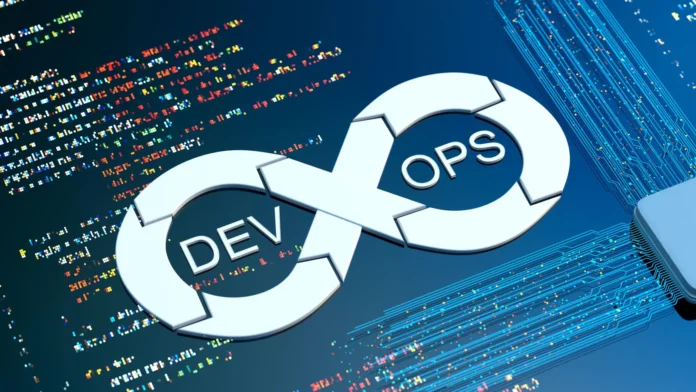DevOps is a combination of cultural practices, philosophies as well as tools to increase the ability of an organization to provide services and applications at a fast speed: transforming and improving the quality of products in a much faster rate than companies together conventional software development and infrastructure management procedures. This allows companies to provide better service to their clients and to compete more definitely on the market.
How DevOps Works ?
With the DevOps structure, the operational and development teams will no longer be “siloed.” At times both teams are joined into one team, where engineers are involved through the whole lifecycle of an application starting from testing and development until deployment, and learn a variety of knowledge which aren’t limited to just one task.
In certain DevOps designs such as security and quality assurance teams can also be more connected to development operations throughout the duration. If security is the primary focus of all members in the DevOps team, it is often called DevSecOps.
They employ methods to automatize processes that previously used to be laborious and slow. They utilize a stack of technologies as well as tools to benefit their teams develop and manage applications swiftly and efficiently. They also benefit engineers to independently achieve tasks (for instance, for example, the deployment of code or setting up infrastructure) typically needed benefit from different teams in order to increase the efficiency of teams.
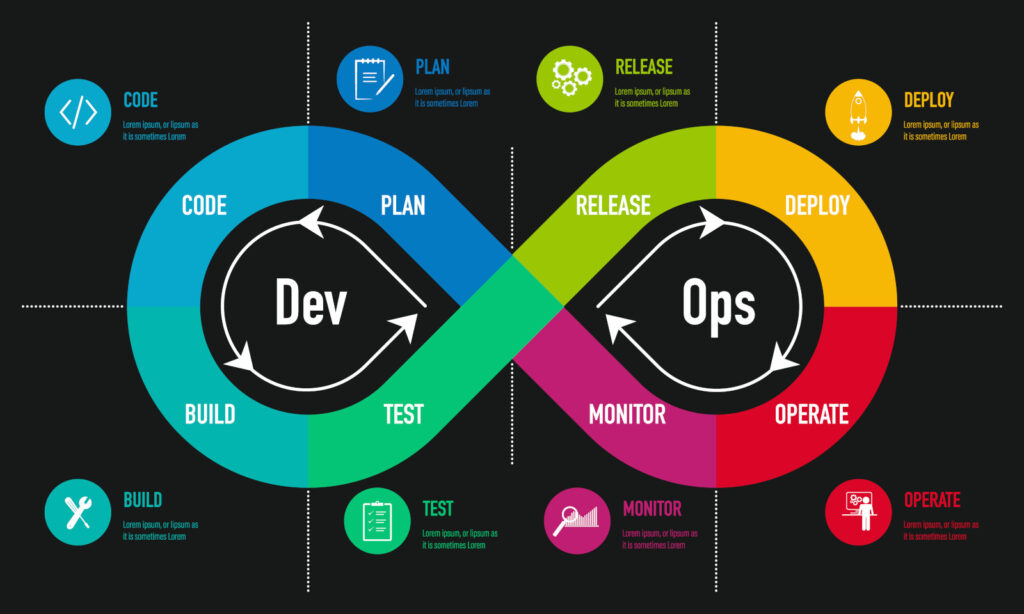
DevOps Core DevOps fundamentals
- Automating the life cycle of software development. This includes automating tests, builds release, setting up of development environments and other manual activities that could slow the process or cause human errors to the delivery of software.
- Communication and collaboration. A good DevOps team can be automated, but an excellent DevOps team is also able to use effective collaboration and communications.
- Continuous improvement and minimization of waste. From automating repetitive tasks to watching performance metrics for ways to reduce release times or mean-time-to-recovery, high performing DevOps teams are regularly looking for areas that could be improved.
- Focus on the user’s needs using quick feedback loops. Through automation, enhanced communication and collaboration as well as continuous improvements, DevOps teams can take time to think about the needs of real users and what they would like to provide this to them.
If they follow these guidelines by implementing these principles, companies are able to increase the quality of their code, attain a faster time to market, and participate in more efficient application planning.
Benefits of DevOps
Speed
Accelerate at a high speed so that you can create new products for customers quicker, adjust to market changes better and improve your efficiency in creating the business outcome. The DevOps approach allows your developers and operational teams to complete these outcome. Examples include microservices, continuous delivery and continuous delivery enable teams to manage services, and later deliver updates faster to them.
Rapid Delivery
Accelerate the frequency and speed of updates so that you are able to create as well as rise your product quicker. As quickly you are able to introduce new features or resolve bugs, the more quickly you’ll be able to meet your customer’s needs and obtain a an advantage in the market. Continuous Integration and Continuous Delivery are methods that streamline the process of software releases from creation to deployment.
Reliability
Make sure you are ensuring the accuracy of your application modifications and updates to infrastructure so that you are able to deliver them faster with a smooth satisfaction for the end-users. Utilize practices such as Continuous Integration and continuous Delivery to verify the effectiveness of each modification as well as safe. Logging and monitoring practices benefit to keep you informed about results in real-time.
Scale
Control and run your development and infrastructure processes on a large scale. Automated and consistent benefit to manage complicated or evolving systems effectively and at a lower risk. In particular infrastructure as code can help to manage the development, testing and production systems using a reproducible and effective manner.
Improved Collaboration
Create more efficient teams using an DevOps organizational model, which is based on values like responsibility and ownership. Operations and developers work closely, have a common responsibility as well as combining their workflows. This can reduce inefficiencies as well as save time (e.g. shorter handover time between operations and developers, creating code that takes into consideration the conditions within which it runs).
Security
You can move quickly, while keeping control while ensuring control and ensuring compliance. The desirable way to do this is by adopting the DevOps approach without losing security through together automated guidelines for compliance, fine-grained controls and techniques for managing configurations. In particular, together infrastructure as code and policies as code you could define policies and keep track of compliance in a larger an escalating scale.

Why DevOps Matters
Software as well as the Internet changed the way we live as well as its sectors that range from entertainment to shopping to banking. Software does not just support the business, it is now an integral part in every aspect of enterprise. Businesses interact with customers by with software as web-based apps or services and also across all kinds of gadgets. Additionally, they use software to rise efficiency in operations by changing each aspect in the value chain like communication, logistics, and processes. Much like physical goods manufacturers changed the way they create, design and distribute their products together automated manufacturing throughout the 20th century, businesses need to change their methods of building and delivering software.
How to Adopt a DevOps Model
DevOps Cultural Philosophy
Moving to DevOps will require a shift in mindset and culture. In its most basic form, DevOps can be described as removing boundaries between traditionally segregated teams: operations and development. For some companies the teams may not exist separate operations and development teams. In fact, engineers can do both. In DevOps these two teams are able to maximize the efficiency of the developers as well as the stability of operations. They are constantly communicating to rise communication, improve efficiencies, and increase the quality of service they offer to clients.
They are fully responsible for their offerings, sometimes going over and above what their duties or positions have historically been thought of by considering the needs of customers and ways in which they can help in meeting those needs. Security and quality assurance teams could also be joined to those teams. Companies with an DevOps approach regardless of organizational structures, employ teams who consider the complete process of development and the infrastructure as being part of their job.
DevOps Practices Explained
There are several fundamental techniques which benefit businesses innovate more rapidly by making software more efficient and automated creation and infrastructure management procedures. The majority of these methods can be done with a proper tooling.
- A key practice is to do frequent but tiny changes. This helps organizations develop more quickly for their customers. The updates tend to be more gradual in their nature as opposed to the periodic updates made using traditional release methods. Small, frequent updates reduce the risk of each deployment dangerous. They benefit teams to address issues faster since they can pinpoint the previous deployment which caused the problem. Though the timing and amount of updates can differ the organizations together the DevOps method will deploy updates frequently than those together traditional practices for software development.
- Companies can also utilize the microservices model to benefit make their apps more flexible, and to facilitate quicker development. The microservices model separates huge complex systems to simple separate applications. The applications are divided into distinct components (services) and each one assigned a specific goal or purpose and operating independently of the peer services and overall application. This design reduces the time and effort involved in updating applications while, when each service is supported by smaller, flexible teams that are responsible for each service, the organization can operate faster.
- The combination of microservices as well as the increased frequency of release results in significantly higher deployments, which could create operational problems. Therefore, DevOps methods like continuous integration as well as continuous delivery address these challenges and enable organizations to bring rapid delivery safely and securely way. Automating infrastructure, for example infrastructure as code or the management of configurations, benefit to ensure that computing resources are agile and responsive to constant modifications. Furthermore, the practice of monitoring and logs allows engineers to track the performance of their applications as well as infrastructure to respond swiftly to any issues.
Together, these methods benefit businesses impart quicker updated and reliable information for their clients. Below is a brief outline of the most the most important DevOps techniques.
DevOps Practices
These are DevOps accurate methods:
- Continuous Integration
- Continuous Delivery
- Microservices
- Infrastructure as Code
- Monitoring and Logging
- Communication and Collaboration
Here, you will be able to learn more about each specific method.
Continuous Integration
Continuous integration is a method of software process where developers routinely incorporate their latest code changes into a central repository following which automated tests and builds are performed. The primary objectives of continuous integration is to detect and correct issues faster, rise software quality, and cut down on the time required to test and publish new software upgrades.
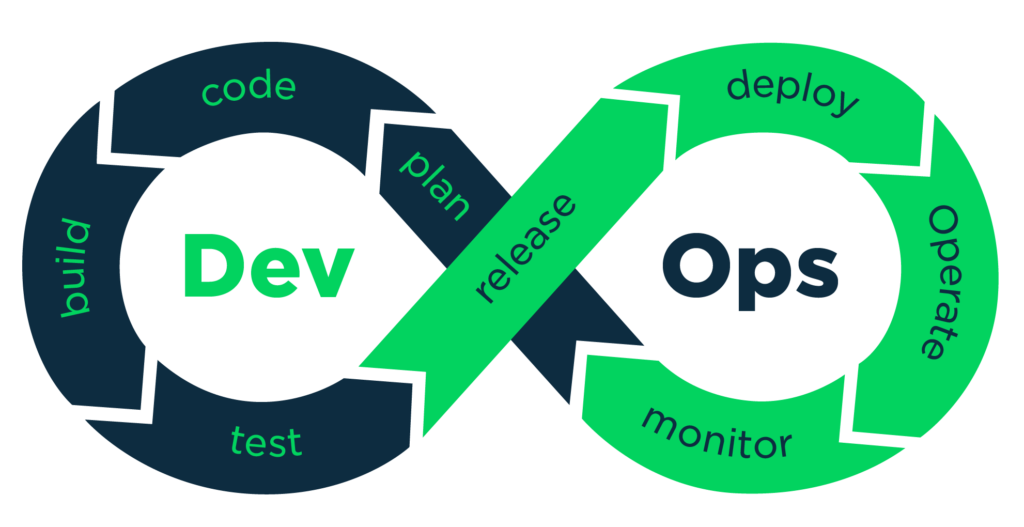
Continuous Delivery
Continuous Delivery is method of software process wherein code modifications are built and tested automatically and then ready for deployment into production. Continuous integration extends on continuous integration by making every code change into a test environment or an environment for production after the build phase. If the continuous delivery process is executed correctly, developers will be able to deploy a build-ready product that has been tested by an established test procedure.
Microservices
The microservices architecture provides an approach for designing an application that is an array of smaller services. Each service operates within its own processes and connects to other services via a clearly defined interface with the simplest mechanism available usually an HTTP-based programming interface (API). Microservices are based on the capabilities of business; every service has specific purposes. It is possible to use various software frameworks and programming languages to create microservices. You can deploy them separately or as a service or as a set of services.
Infrastructure as Code
The term “Infrastructure as Code” refers to an approach in which infrastructure is managed and provisioned with software tools for development, including the control of version and continuous integration. The cloud’s API-driven design allows the system administrator and developer to communicate with infrastructure in a programmatic manner in a scalable manner, instead of having to manually setup and manage resources manually. This means that engineers can interact with infrastructure together codes-based software and approach infrastructure the same way to the way they deal with applications. Since they are defined through codes, servers and infrastructure are able to be quickly implemented with common patterns and up-to-date with latest updates and patches and duplicated in repeatable methods.
Configuration Management
Administrators, developers and programmers make use of code to automate the host and operating system operation tasks, configuration as well as other tasks. Coding ensures that configuration changes are repeatable and standard. This frees system developers and administrators of manually setting up operating systems, applications for system use or server applications.
Policy as Code
By having infrastructure and its configuration recorded in the cloud companies can be able to monitor and enforce compliance on a regular basis and on a large size. The infrastructure described in codes can be tracked as well as validated and reconfigured using an automated method. This allows organisations to manage changes on resources, and warrant that security procedures are implemented in a distributed way (e.g. security of information or conformity with PCI-DSS and HIPAA). This allows the teams in the same organization to operate faster since non-compliant resources are automatically flagged to be further investigated or immediately brought back in conformity.
Monitoring and Logging
The organizations monitor logs and metrics in order to understand the way that infrastructure and application performance affects the user performance of their products’ customers. In capturing, categorizing as well as analyzing the reports and data generated by infrastructure and applications companies can understand how updates or updates impact users. giving insight into the underlying cause of issues or sudden modifications. Monitoring is becoming more important since services need to be accessible all hours of the day and infrastructure update frequency rises. The creation of alerts, or the an analysis in real time of these information also allows organizations to more proactively monitor their service.
Communication and Collaboration
Collaboration and communication in an organisation is among the most important aspects of culture in DevOps. Utilizing DevOps software and automating the process of software delivery creates the possibility of collaboration through physically connecting the work processes and roles of both operations and development. In addition to that they establish solid guidelines for information sharing and facilitate communication by using chat apps as well as issue tracking or project tracking systems as well as Wikis. This improves the communication between developers, operations and other departments such as sales or marketing, making it possible for all departments of an organization to work more closely with targets and initiatives.
DevOps Tools
The DevOps method relies on efficient tools to benefit teams quickly and effectively create and implement new solutions for their clients. The tools benefit automate manual work, benefit teams manage complex environment at a scale as well as keep engineers at the helm of the speed created by DevOps. AWS has services specifically designed to support DevOps and designed initially for use in AWS cloud. AWS cloud. These services benefit to implement the DevOps methods described earlier.
Whatever DevOps toolchain that an organisation uses regardless of the type, an effective DevOps procedure must employ appropriate tools for all the crucial phases of DevOps process:
- Discover
- Plan
- Build
- Test
- Monitor
- Operate
- Constant feedback
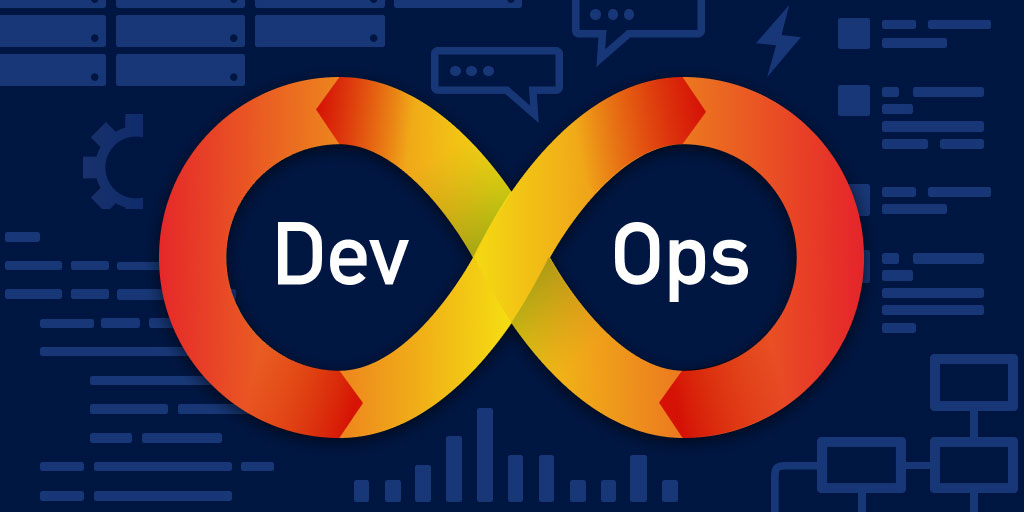
Discover
The Discover phase is when an DevOps team studies and defines the project’s scope. Particularly, it involves actions like the user’s research, setting objectives, and delineating what constitutes success.
Instruments such as Mural and Miro enable the entire software team to collect concepts and conduct research. Jira Product Discovery organizes this data into useful inputs and prioritizes tasks for developers. When you’re deciding on priorities your priorities, it’s also important to keep the backlog of feedback from users in your mind.
The process of discovery for a product is the beginning step of any product design. It then serves as the foundation for decision-making. When you are conducting the process of discovery, you will find all the important data about the user’s issues and help in providing solutions to them.
It is recommended to look for programs that facilitate “asynchronous gathering of ideas”. It is essential that everyone has the ability to discuss and share everything: thoughts, strategies objectives, needs documents, maps, and roadmaps.
Plan
In taking a page from the book on agile and recommending tools that enable operations and development teams to divide work into smaller and manageable pieces to speed up deployment. This lets you gain insights from your users earlier and aids in improving a product on the basis of comments of users. Find tools which prepare plans for sprints, issue tracking, and even allow collaboration tools, like Jira.
A great way to stay on top of this is constantly collecting feedback from users, arranging the feedback into useful inputs and prioritizing the actions you take for the development team. Use tools to encourage “asynchronous gathering of ideas” (if you’re planning to). Everyone should be able to communicate and discuss any topic: strategies, ideas and goals, as well as requirements documents, and roadmaps.
Also, don’t forget features flags and integrations. Whatever way you choose to define your project or feature, it needs to be transformed to user stories on the backlog for development. Feature flags are statements in the source code base which allow teams to switch features on or off.
For more information on this process read this blog by Atlassian Product Managers on Backlog grooming and prioritization.
Build
Environments that are identical to production for the development
Although Puppet and Chef primarily benefit operational processes, developers can also benefit from open-source tools such as Kubernetes and Docker for the provision of specific environment for development. Programming with virtual, disposable copies of production can benefit you accomplish more tasks.
When every team member works from identically-provisioned environments, “Works on my machine!” stops being funny because it’s true (now it’s just funny).
Infrastructure code
The reason developers create modular apps is that they’re easier to maintain and reliable. Therefore, why don’t we extend this idea into IT infrastructure? It can be difficult to adapt to systems as they’re always evolving. We can overcome this using together codes for provisioning.
Re-provisioning infrastructure can be faster than repair it – as well as being more consistent and reliable. This also allows you to quickly spin up different versions of your development environments with the same configuration and settings in production. Provisioning codes can be applied or reapplied, putting the server in a predetermined base. It is stored within version control. It is able to be tested, integrated to CI (continuous integration) as well as peer-reviewed.
Once institutional knowledge has been, properly, codified into codes, the need to documents and runbooks is gone. The result is repeatable processes as well as secure methods.
Control of source code and code sharing
- It is essential to maintain the source control for your code. Software for managing source control benefit to store your code across several chains, so that it is possible to track every modification and work more efficiently by sharing the modifications. Instead of waiting for change approval boards before you deploy production, you are able to increase efficiency and quality of code by conducting peer reviews via pull requests.
- What exactly are pull requests you may ask? The pull requests inform your team members about the changes which you’ve committed into a development branch of your repository. The team is then able to review the changes proposed and debate changes before incorporating these into your principal code line. Requests for pull improve the efficiency of your software. This payoff in fewer bugs or incidents. This reduces operating expenses as well as payoff in quicker development.
- Tools for controlling source code should be integrated with other tools. This permits you to link the various components of creation and distribution. This lets you know what code the feature has being used in production. When an event occurs and the code is found to be in error, it could be pulled for clarification of the event.
Continuous Delivery
Continuous integration is the method of adding your code to an open repository at least once every day and then conducting tests every time. This way, you can spot problems in the early stages, address them at the time they’re easy to correct, and then release new functions to your users whenever possible.
Pull-requests to review code requires branches and is currently popular. It is the DevOps North Star is a procedure which outcome in less and more speedy branches, and also maintains the rigor of testing but without degrading the speed of development.
Find tools that will automate the application of your tests on development branches as well as give you the choice to move them to the main branch after the branch’s builds have been productive. Additionally the constant feedback via instant chat messages by your team through a an easy integration.
Learn the ways Bitbucket Pipelines helps you automate your program from testing to production.
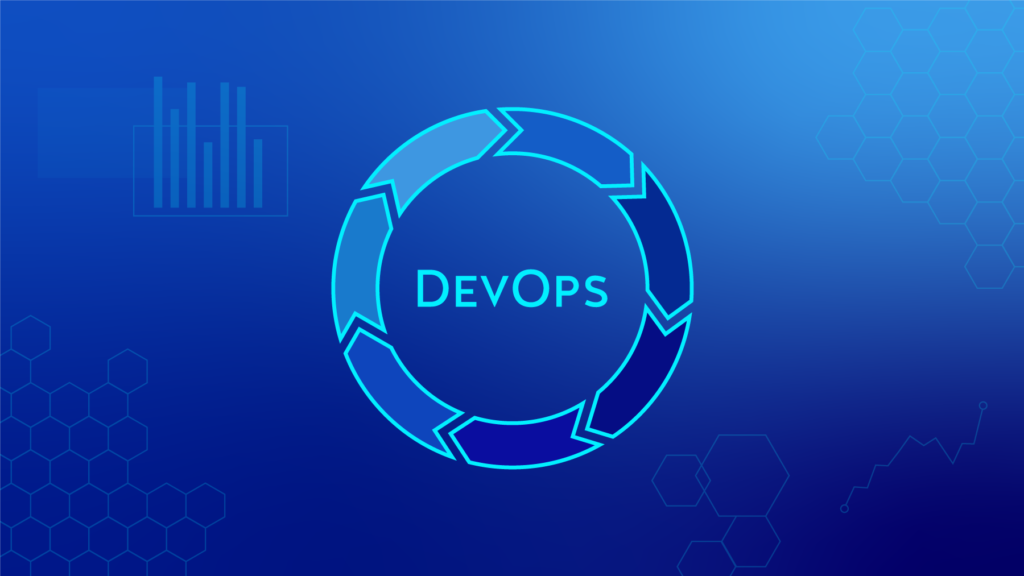
Test
Automatic testing
- Testing tools meet a wide range of requirements and features, which include exploratory tests, test management as well as orchestration. For those with the DevOps Toolchain automation plays an essential feature. Automation of testing can pay off with time, increasing the speed of your development as well as testing times for the longer term. Also, in the context of a DevOps context, it’s crucial because of another reason: awareness.
- Automating tests can boost the quality of software and decrease the risk of failure by performing frequently and early. Developers can conduct routine tests that are automated, which cover various areas like UI testing Security scanning, UI testing, and load testing. Additionally, they produce charts and trends which benefit to identify areas that are at risk.
- It’s a fact that happens in the field of the field of software development. However, there is no way to reduce what isn’t anticipated. Give your team of operations an favor by letting them explore the underbelly along with you. Find tools that can support wall boards, and let all working on the project make comments on the specific deployment or build outcome. Bonus points for software that allow you to allow Operations involved in Blitz tests and exploratory testing.
Deploy
Deployment dashboards
One of the toughest elements of creating software is the task of putting all changes, tests and deployment details of a forthcoming release into one spot. The last thing that anyone requires prior to a release is a lengthy gathering to discuss the status. That’s where dashboards for releases are useful.
Search for tools that offer an integrated dashboard for your code repository as well as deployment tools. Choose a tool that offers all the information on build, branches Pull requests, builds, as well as warnings about deployment in one spot.
Automatic deployment
There’s not a magic formula to automate deployments that fit in every application or IT infrastructure. Converting the operations’ runbook to a script that can be executed by cmd with Ruby and bash can be an easy way to begin. It is essential to follow good engineering practices. Utilize variables to calculate host names. Maintaining separate scripts or programs to each host isn’t enjoyable (and isn’t even half the way to go otherwise). Make utility methods or scripts to ensure that your code is not duplicated. Review the scripts you write to assure they are sanity-checked.
Automate deployments for the lowest level first in the area where you’ll likely be with the automation most often Then replicate it from there to the production environment. In the end it will highlight the differentiators between your different environments, and provides a the tasks needed to standardize them. In addition, standardized deployments with automation can reduce “server drift” across environments and within.
Operate
Changes, incidents and tracking of problems
Collaboration is key to building trust in DevOps teams is to make sure that they’re looking at the same project. What happens after incidents are documented? Are they traceable and linked to software issues? If changes are made, do they have a connection to the release?
It is impossible for Dev to collaborate with Ops more than the fact that incidents and software development projects being tracked on different platforms. Make sure you use tools that store the incidents, issues, and modifications as well as software development projects together in order to find and correct problems quicker.
Observe
Performance and performance of the server Monitoring
There are two kinds of monitoring that need to be automatized: server monitoring and app performance monitoring. By hand “topping” the box or contacting your API by means of a test can be good to check for errors. However, it is important to know patterns and overall condition of your application (and the environments).
It is essential to have software which is monitoring and recording information all day long. Continuous observability is an essential ability to be successful DevOps teams. Search for tools that work with your chat program and alerts are sent straight to the team’s space or to a room specifically for any incidents.
Continuous Feedback
Your customers are already telling them that you’ve constructed the right things – you must just listen. Continuous feedback is a combination of the process and culture to get feedback frequently, as well as instruments to gain insight from feedback.
Continuous feedback techniques include collecting and analyzing NPS information, surveys on churn as well as Support tickets, bug reports and tweets. Within the DevOps atmosphere, all members of the team is able to user feedback since they benefit in everything from the release process to the exploratory testing sessions.
Search for apps that combine chat tools together with your survey tool to serve NPS-style feedback. Twitter or Facebook are also able to integrate chat with immediate feedback. If you want to know more about the comments coming from social media platforms, you should consider investing into a social media management tool that will pull reports together historic data.
Incorporating feedback and analysis into your design may seem like slowing the speed of development for a short time however it’s much more effective longer term instead of releasing features people don’t want.
